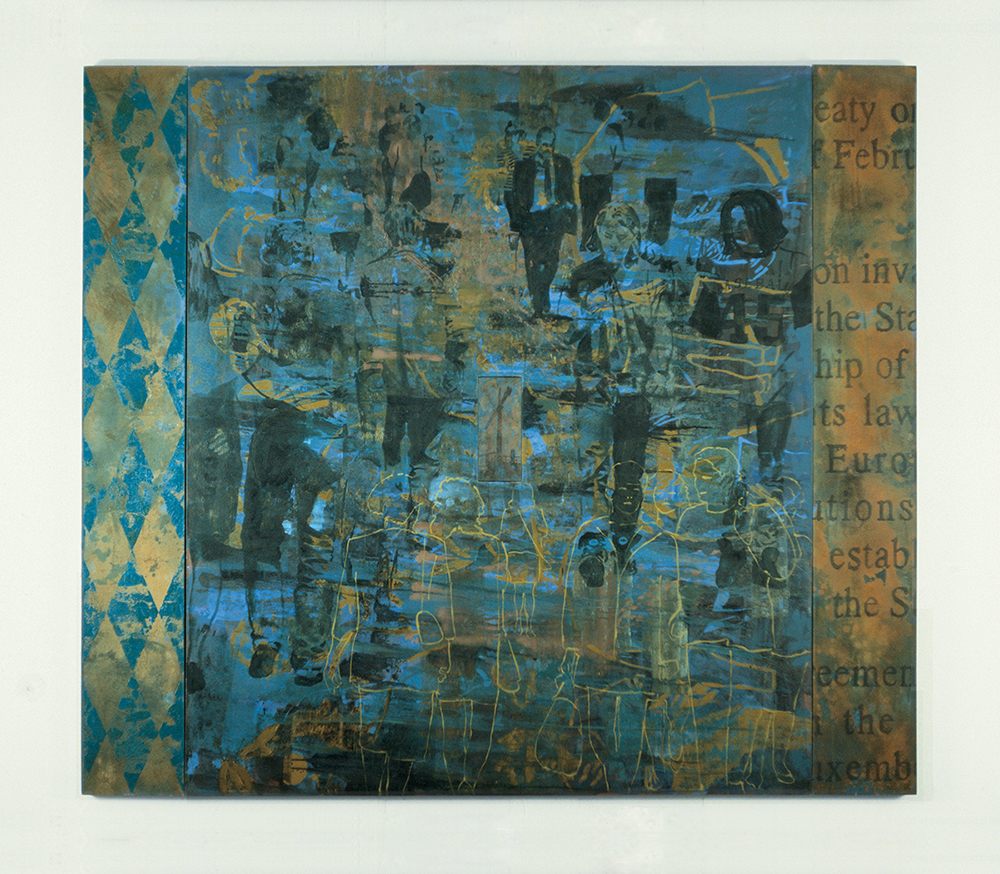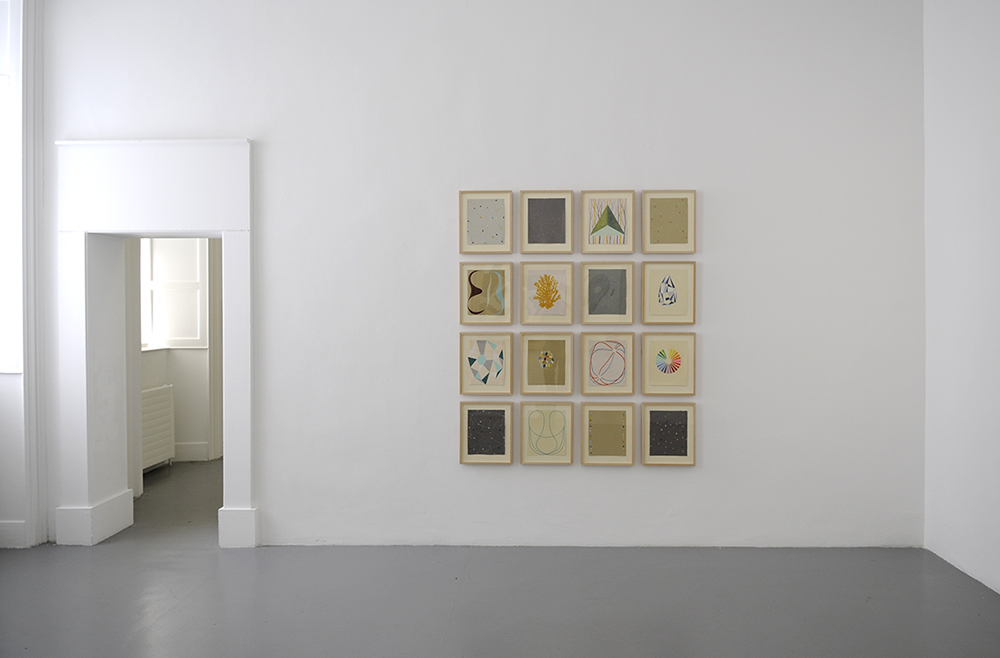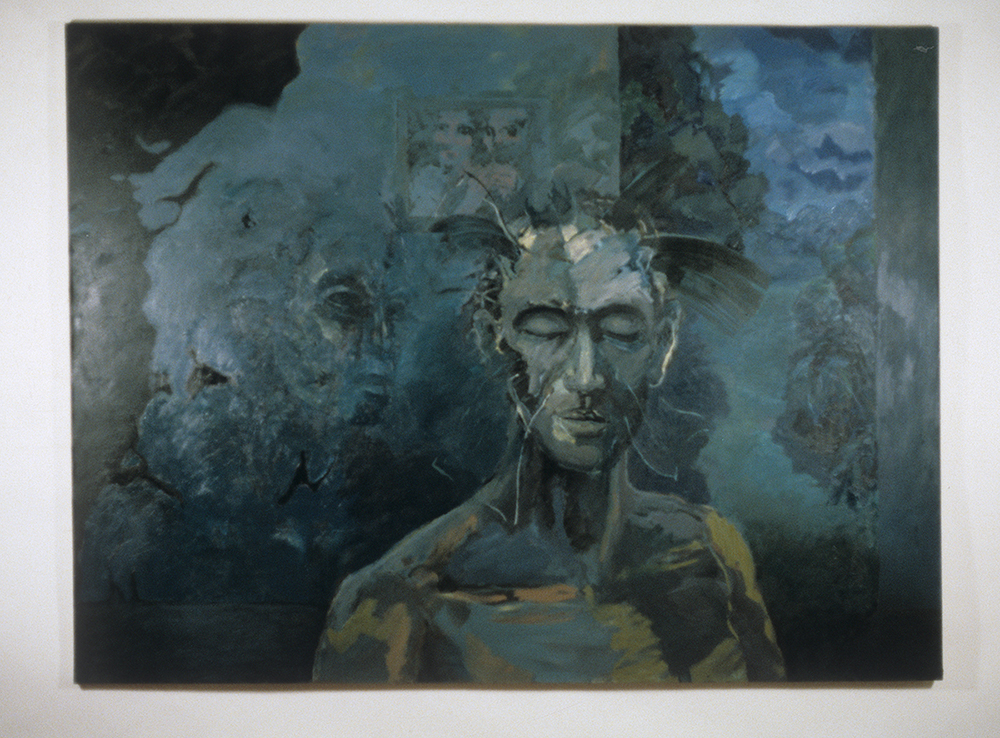
Ronnie Hughes is a Sligo based painter from Belfast. Ronnie is also a lecturer in the local IT and is a well respected figure in the Irish art scene. I met Ronnie through local exhibition openings while I’ve worked at The Model. It was great to sit down with Ronnie over Zoom to discuss his studio practice and his views on painting and drawing. Ronnie touches on his studio practice and views on painting and drawing. We also discuss the evolution of his practice. You really get a sense that Ronnie has given great thought to the development of his practice when he talks about changes in his work. We had a really thoughtful discussion, I hope you enjoy.
Talk me through a day in your studio.
When I go to the studio, I have sets of paintings to work on. I tend to focus on two to three things at any one time. This is something I have done since I was at college. I might have a family of paintings that are related to each other but like all family members, they diverge and do their own thing. And I quite enjoy that. It’s almost like spinning plates. You are always putting a fresh problem in front of yourself.
I don’t use the wall space much unless there’s a show coming up. I have a particular space where I like to work. So, I focus my attention there and sort of blank out everything else. If I am waiting for paint to dry or figuring out what to do next, I’ll just put the work aside and use that time to sit and look and think for a while. They’re usually never too far away but sometimes, I leave them and come back to them in a month or two.
The studio is quite big. It’s fantastic to work in – especially in the warm weather – but it can be a cold studio in the troughs of winter. There are certain things you can’t do in the winter months because it’s too cold. I work around those limitations now. I figured out how to dress for the studio in winter, and I use the summer months to get a lot of drawing done because you can’t be sitting down to draw in a cold studio.

You have said in other interviews that the surfaces you paint on dictate the outcome of the work.
Yeah, I sometimes make a feature of [the surface]. If I’m working on linen, there might be raised bumps that I can use as marker points to make some sort of lattice structure. The painting develops from there. You can get similar types of patterns from plywood. Obviously, the different textured surfaces make a difference in themselves.
I don’t see purity as an important factor in art, generally. I feel the opposite is the case. Impure things elicit responses from people, and that is what I’m interested in. If I’m making a painting that is ostensibly abstract, it creates reactions in people, and I’m not completely in control of those reactions, but I can steer people in certain directions with my own particular use of formal elements. That’s something that I think about a lot.

I’m interested in pattern. It has always appeared in the work in different ways. In my recent work, I’m exploring the construction of a pattern. When you think about it, what is a pattern? Whether visual, musical or psychological, it’s a structure that creates expectations for certain things to happen. And when you have that kind of structure, you can play off of it; you can frustrate the structure or use it to unleash something else. Even before I went to college, I remember reading about the Golden Mean [the Ancient Greek ideal of a desirable middle between two extremes], when I was an A Level student studying art. I have read a lot about it since. For me, it’s extraordinary that there are certain types of pattern relationships that run throughout almost everything. There is a book by [lecturer and water researcher] Theodor Schwenke called Sensitive Chaos which is about that idea. I find that all fascinating. It feeds into my work.

You have mentioned in the past that paintings should be viewed as objects. Could you explain what you mean by that?

Well, I think it’s important to say that paintings are not just two-dimensional. I think it’s a bit reductive to talk about paintings in terms of two dimensions. And I suppose the likes of [essayist and art critic] Clement Greenberg who talked about the flatness of painting, would have set a precedent for this. That may be of interest to some people but that was never the case for me. Like a lot of painters, I’m profoundly interested in the materiality of what I’m working with. It’s not this two-dimensional surface. In fact, it’s the four-dimensional character of the work that really fascinates me. What I see is that the work holds time within itself.
Some believe that abstract art encourages people not to think. I don’t really agree with that. I think of my paintings, in cultural terms, as prompts to reflection or contemplation.

The process of how a work was made is embedded in its surface in various ways. If you look closely at a Rembrandt, you can actually see the evidence of touch. You see the making of the work even though it was painted a long time ago. It’s still held within it, and I like that about painting. That kind of intuitive thinking. I’m very conscious that I’m making a thing. There is a big difference in looking at a painting and then seeing its reproduction as an image. Nowadays, most will see it on a computer screen. Even when I’m documenting, I make an effort to retain that sense of the work as an object – lighting it with a particular shadow for example. For me, it’s really important and it’s hard to even say why. I’m certainly very conscious of the depth of the structure and what happens on all the sides of a painting.
It’s interesting that you mention time captured in the object because I often perceive a sense of immediacy when I look at your paintings.
That’s funny because there really isn’t a lot of immediacy in my process. A few years ago I had to catalogue all of my work for my website. I routinely take photographs when I’m working on the different stages of the paintings, mainly for comparison’s sake. There is a level of objectivity in seeing a painting on a camera screen that isn’t possible when standing in front of it. I’ve used other ways too, to almost sneak up on paintings and try to see them objectively. I find myself looking at them in mirrors and through windows. When I was sifting back through these images, I was horrified to discover some paintings had taken me five years to make and I hadn’t realised! They keep on mutating and there is so much going on that I don’t always notice the time frame.
How did the switch from oils to acrylics come about?

My earlier paintings were very physical, and the technique I used called for bucketloads of paint and turpentine. At a certain point, I started to have problems with my breathing and contact dermatitis. My hands would continually be covered in paint and solvent. I had been working with oil paint for around eight years, so the switch to acrylics created quite different outcomes. It was challenging but there were a bunch of advantages to it – particularly the drying time. Before, I might have poured something on to a painting surface and waited two weeks for it to dry. I would have had these large paintings occupying floor space in the studio that I was paying rent for – twiddling my thumbs for two weeks. There’s a big difference between two weeks and two days.
Have acrylics become an advantage to your productivity?

I don’t know if it was an advantage or disadvantage but certainly a change. I had more control over the amount of pigment when I switched to acrylics. I could decide how opaque or translucent I wanted the paint to be. And I could control the finish – whether it was gloss, eggshell or matte. I could make a kind of textured glaze; those types of things were important to me. But at the same time, I missed the consistency of oil. Whatever your mix, the colour of oil paint doesn’t change as it’s drying. The fact that acrylic changes tone is still a pain. You could be trying to correct something and think you’re all done but when you come back in a few hours, it’s slightly too dark. Oil stays open [to reworking]. But generally, I don’t mind. I’m used to working with acrylics, and I have a grasp of them now. All mediums have their pros and cons.
Drawing is an important part of the process for you. You have said that it is more central than painting…

Around 2006, I started making an awful lot of more drawing work. I’ve never been a person to keep notebooks. It was never for me. I teach now, and I know for some of my colleagues, it’s very important to maintain things like journals. I can see how it’s important – my wife is an illustrator, and she draws furiously in journals – but I have always felt that, if I have the time, I want to make things out in the world. I did a couple of residencies in New England, in Vermont and Connecticut, back in 2006 and when I was there, drawing became very important. I started to draw much more freely, not stopping myself from drawing in a representational style. Things like signs from gas stations, trees and various objects. I ended up doing this whole extended series of drawings. It became something quite freeing for me when approaching a new painting. I suffered before from the temptation to keep developing a painting. In painting, you don’t have to do things in the exact way that they should be done because you can always do something else with the work tomorrow. The drawings were a lot more precise. By their nature, they don’t give you the same license to make mistakes and revise.

That particular mentality of precision became part of my practice in the studio. When I got back again, I started fostering a more drawing-like approach to my painting – in the sense of drawing something out from the process. I have been interested in that act of expressing something that is hidden or latent throughout my entire career. Looking back at my degree show, I made figurative paintings but they were about plants and natural forms growing out from figures. This idea of nature coming from within has always been there in the work. Those theological questions of randomness and design are of interest to me.

Has your role as a lecturer influenced your work?
Around eight years ago, I had to deliver a series of design lectures about visual literacy. That helped crystallise things for me because I had a lot of vague notions about that stuff, and I realised then that you can’t really get up and share vague notions with a class of students. I had to go and read about things like Gestalt psychology, how we perceive images, formal aspects and other factors that help to construct meaning. I began looking at various modes of perception – subliminal as well as conscious. That has also caused a big shift in the work over the last few years.
I had a show in Los Angeles back in 2011, and I remember the gallerist saying that he had never shown work as formal as mine before. That really shocked me at the time. I thought, “What? You don’t get the work. It’s the opposite of that!” Having thought about it since, I realise that it is formal work in many ways. I’m using a particular, reduced set of elements to orchestrate things. It’s important to stress that that doesn’t preclude allowing various types of associative meaning, or representations of sorts to enter the work! I have always thought of my work as being more akin to poetry than to prose. Poetry involves fewer formal elements in a way that suggests more possibilities which aren’t so forensic or specific. You could say the same about painting, and that’s what I like about it.
You can find out more about Ronnie Hughes work through his Instagram page and website, links below
https://www.instagram.com/ronniehughesartist/

Really interesting read! Thoroughly enjoyed it!
LikeLike